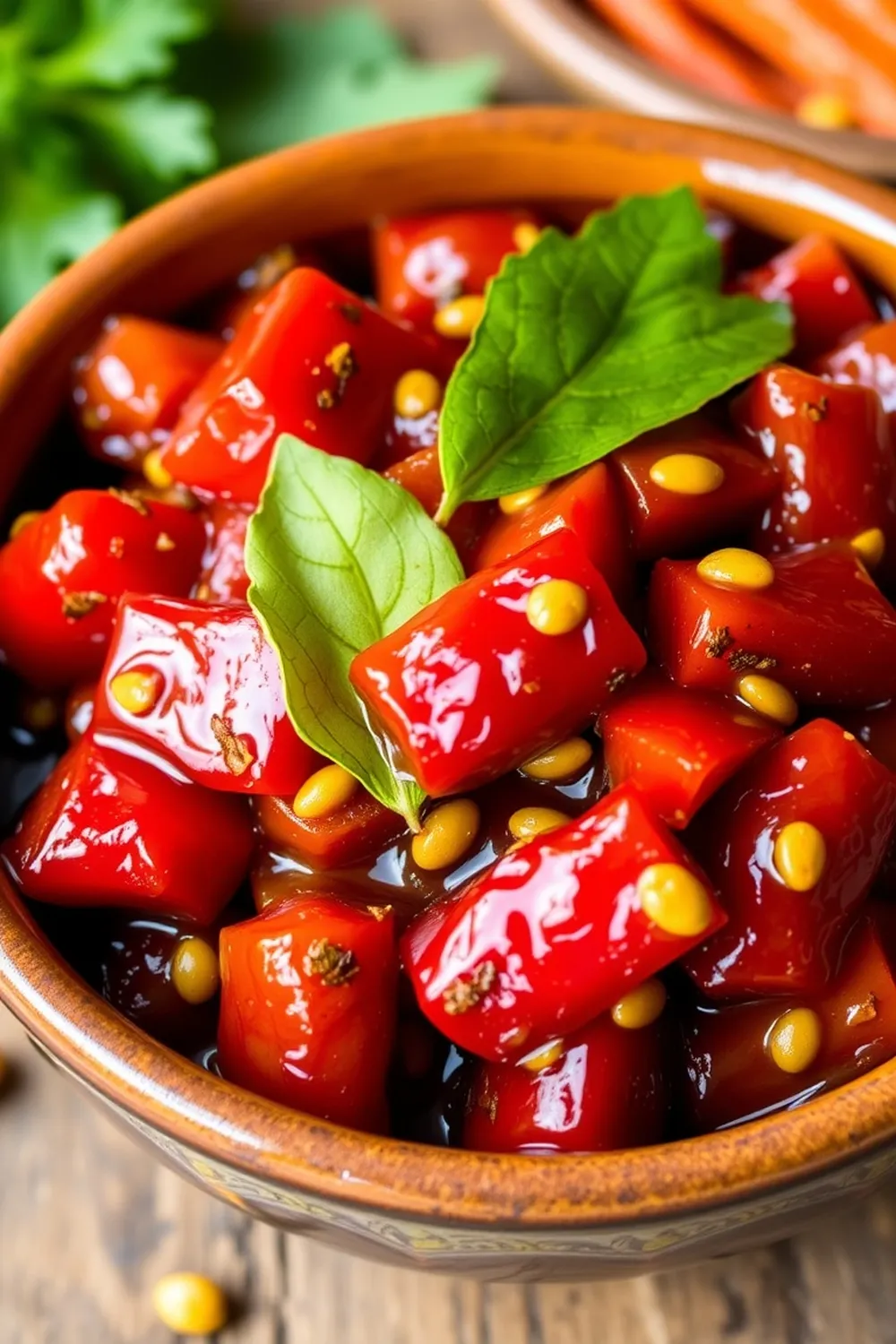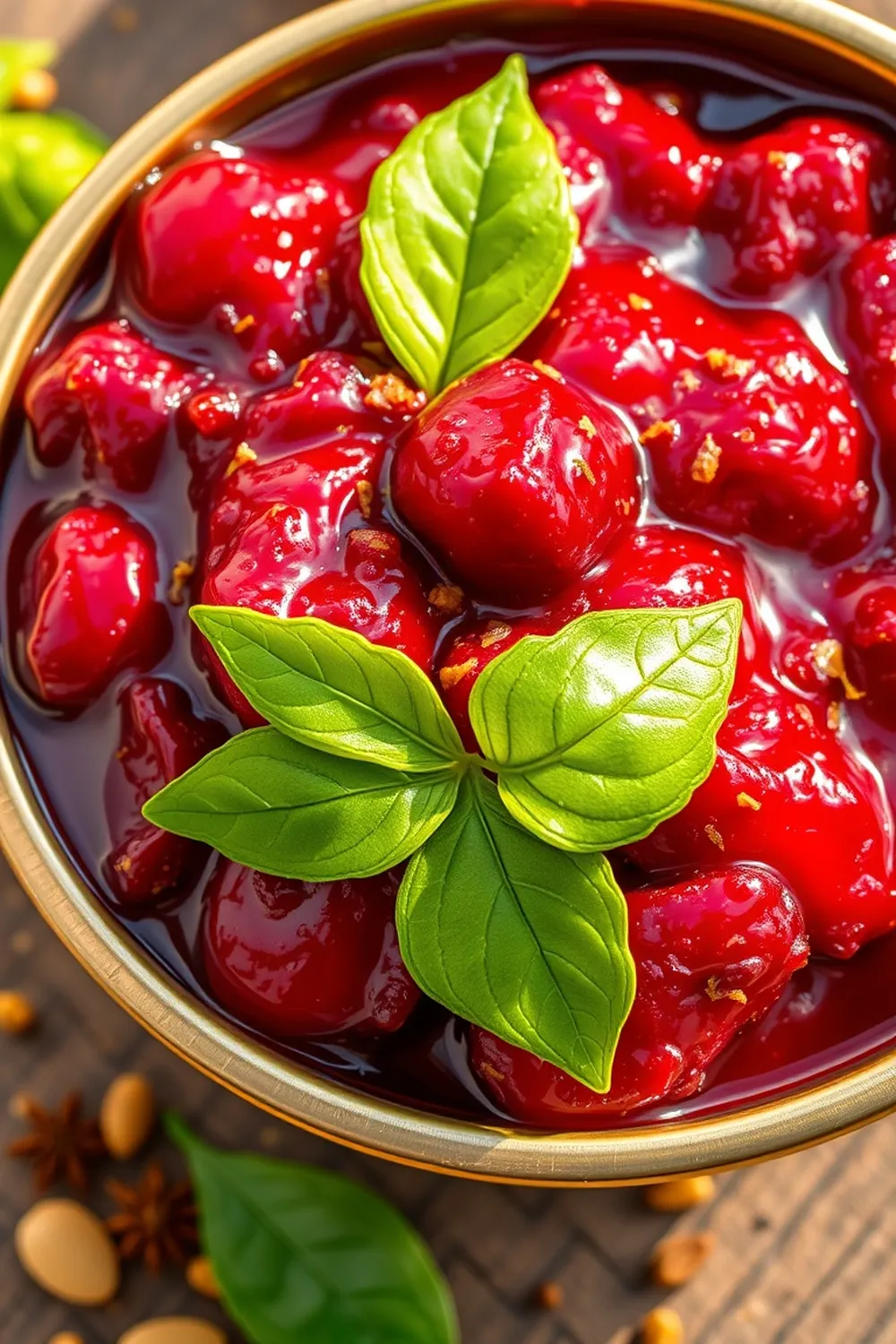- Cut lemons in half and squeeze the juice into a clean glass jar.
- Slice the squeezed lemon halves into wedges or pieces and add them to the jar.
- Add salt, sugar, and carom seeds to the jar with the lemon pieces.
- Seal the jar tightly and shake vigorously to combine all ingredients.
- Store the jar in a cool, dry place. Shake daily for at least 2 weeks to aid fermentation.
- Add more fresh lemons, salt, and sugar to the jar as needed, ensuring the lemons remain submerged.
- Use as a condiment after the initial 2-week fermentation period; the flavor improves with age.
- Calories:15 kcal25%
- Energy:62 kJ22%
- Protein:0.1 g28%
- Carbohydrates:3.5 mg40%
- Sugar:2.8 mg8%
- Salt:250 g25%
- Fat:0.1 g20%
Last Updated on 2 months by Neha Deshmukh
Authentic Lemon Pickle Recipe – Ajwain & Salt Preserved Lemons
Hey everyone! If you’ve ever craved that zingy, spicy, and utterly addictive lemon pickle (nimbu ka achar) that your grandma used to make, you’re in the right place. This isn’t just a lemon pickle recipe; it’s the one I’ve been perfecting for years, and I’m so excited to finally share it with you. It’s surprisingly easy, and the flavour just gets better with time. Trust me, once you try this, you’ll be hooked!
Why You’ll Love This Recipe
This lemon pickle is a little slice of sunshine in a jar. It’s incredibly versatile – perfect with dal-chawal, khichdi, or even just a simple roti. Beyond the amazing taste, it’s a fantastic probiotic thanks to the fermentation process. Plus, the carom seeds (ajwain) add a wonderful digestive boost. Honestly, it’s a win-win!
Ingredients
Here’s what you’ll need to make this magic happen:
- 2 organic lemons (whole) – about 200-250g
- 2 teaspoons salt (about 10g)
- 2 teaspoons sugar (about 10g)
- 1 teaspoon carom seeds (ajwain) (about 5g)
Ingredient Notes
Let’s talk ingredients, because choosing the right ones makes all the difference.
Organic Lemons: Choosing the Right Variety
Organic lemons are best, as we’re using the whole fruit, peel and all! Look for lemons that are firm, bright yellow, and have a smooth skin. Meyer lemons are fantastic if you can find them – they’re a little sweeter and less acidic.
Salt: Types and Their Impact on Fermentation
I prefer using sea salt or Himalayan pink salt for this recipe. Avoid iodized salt, as it can sometimes inhibit fermentation and give the pickle a slightly metallic taste. Around 10g is perfect, but feel free to adjust slightly to your preference.
Sugar: Balancing Flavor and Fermentation
Just a touch of sugar helps balance the sourness and feeds the fermentation process. White sugar works perfectly fine, but you could also use a little jaggery (gur) for a more traditional flavour. About 10g is all you need.
Carom Seeds (Ajwain): The Digestive Powerhouse & Regional Uses
Carom seeds are the star of the show! They add a unique flavour and are known for their digestive properties. In some regions of India, people even add a pinch of asafoetida (hing) along with the ajwain for an extra layer of flavour.
Step-By-Step Instructions
Alright, let’s get pickling! It’s really simple, I promise.
- First, cut your lemons in half and squeeze out all the juice into a clean, dry glass jar. Don’t discard those lemon halves just yet!
- Now, slice the squeezed lemon halves into wedges or smaller pieces and add them to the jar with the juice.
- Add the salt, sugar, and carom seeds to the jar, right on top of the lemon pieces.
- Seal the jar tightly with a lid and give it a really good shake – like you mean it! This helps to combine all the ingredients.
- Store the jar in a cool, dry place, away from direct sunlight. This is important for proper fermentation.
- Here’s the slightly magical part: shake the jar vigorously every day for the first two weeks. This helps distribute the salt and sugar and encourages fermentation.
- As time goes on, you might notice the lemons releasing more juice. If that happens, just add a little more fresh lemon, salt, and sugar to the jar as needed to keep everything submerged.
- After the initial two-week fermentation period, your pickle is ready to use! But honestly, the flavour just keeps improving with age.
Expert Tips
- Make sure your jar is completely clean and dry. Any moisture can lead to mold.
- Use a glass jar – plastic can react with the acidity of the lemons.
- Don’t be afraid to experiment with the amount of salt and sugar to suit your taste.
- Patience is key! The longer it ferments, the better it gets.
Variations
This recipe is a great base for experimentation. Here are a few ideas:
- Spicy Kick: My friend Priya loves to add a pinch of red chilli powder or a few chopped green chillies for a fiery kick.
- My Family’s Secret: My grandmother always added a tiny piece of ginger, grated finely, to hers. It adds a lovely warmth.
- Vegan Adaptation: This recipe is naturally vegan! Just double-check your salt doesn’t contain any anti-caking agents derived from animal products.
Spice Level Adjustment
Want more heat? Add a finely chopped green chilli or a pinch of cayenne pepper. Prefer it milder? Simply omit the chilli altogether. It’s your pickle, make it your own!
Regional Variations: North Indian vs. South Indian Pickle Making
North Indian pickles often focus on quick, vibrant flavours, using lots of spices. South Indian pickles tend to be more fermented and use a wider variety of oils and sometimes even dried red chillies. This recipe leans towards the North Indian style, but you can definitely adapt it by adding mustard seeds or fenugreek seeds for a South Indian twist.
Festival Adaptations: Making Lemon Pickle for Diwali or Ugadi
Pickle making is a traditional part of many Indian festivals. Making this lemon pickle for Diwali or Ugadi is a wonderful way to add a homemade touch to your celebrations. It also makes a thoughtful gift!
Serving Suggestions
This pickle is incredibly versatile. Here are a few of my favourite ways to enjoy it:
- With dal-chawal (lentils and rice) – a classic combination!
- Alongside khichdi (a comforting rice and lentil porridge).
- As a condiment with roti or paratha (Indian flatbreads).
- Even mixed into yogurt for a flavourful dip.
Storage Instructions
Store your lemon pickle in an airtight glass jar in a cool, dry place. It will keep for months, even years, as long as the lemons are fully submerged in the brine.
FAQs
Let’s answer some common questions:
What is the best type of salt to use for lemon pickle?
Sea salt or Himalayan pink salt are ideal. Avoid iodized salt.
Can I use lime instead of lemons in this recipe?
You can, but the flavour will be slightly different. Limes are a bit more tart than lemons.
How long does lemon pickle take to fully mature?
While you can eat it after two weeks, the flavour really develops over several months.
What do carom seeds (ajwain) add to the pickle?
They add a unique flavour and are known for their digestive properties.
How can I prevent mold from growing in my lemon pickle?
Ensure your jar is completely clean and dry, and that the lemons are fully submerged in the brine.
Can I adjust the sweetness level in this pickle?
Absolutely! Feel free to add more or less sugar to suit your taste.










